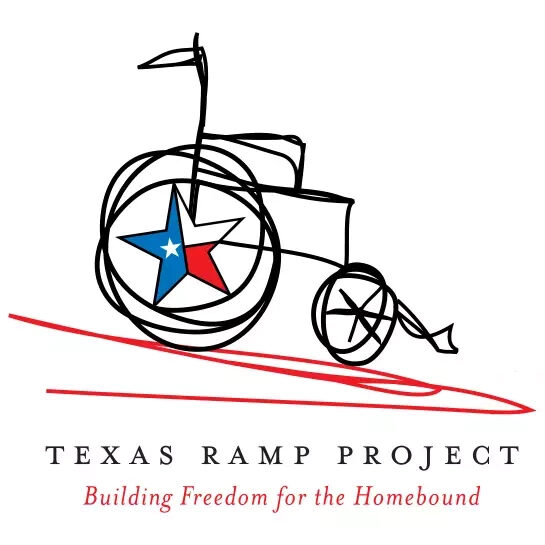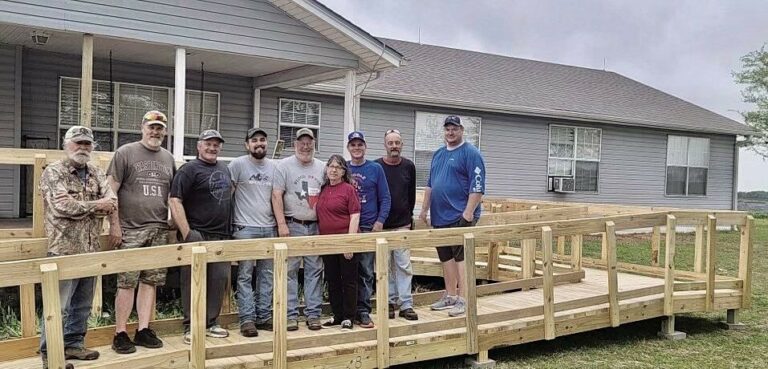Over the past two years, Gatesville has been home to a quiet, yet prosperous
organization known as the Texas Ramps Project. The organization is a 501(c)(3)
nonprofit that provides free wheelchair ramps to low-income older adults and people
with disabilities.
Jim Hoge, the regional manager, brought the Texas Ramps Project to Gatesville in late
2021 in hopes to expand the organization. He has been volunteering with the
organization since he started in 2018.
Hoge was residing in Waco when he first became aware of the organization.
“The founder of Texas Ramps came to our church in Waco and presented a program,”
Hoge said. He then became interested in the cause, started volunteering, and the rest was history.“Texas Ramps started out in the Dallas area with a Kiwanis Club when one of the
members knew of somebody in need of a ramp,” Hoge said.
In 1985, members of the Kiwanis Club of Richardson were asked to build a wheelchair
ramp for a friend. A meeting was held to decide how to build this ramp.
Eventually, the wheelchair ramp was built and a couple members in the club began
researching and noticed that wheelchair ramps are in vast demand throughout Texas.
That initial effort resulted in the Dallas Ramp Project and development of a system to
provide wheelchair ramps to the community.
Twenty years later, the Dallas Ramp Project had built over 1,400 wheelchair ramps, and
it became obvious that the entire state could benefit from the volunteer organization.
This resulted in a new statewide nonprofit called the Texas Ramp Project, which was
established in June 2006. Founder and executive director was John Laine, who had
served as volunteer director of the Dallas Ramp Project.
Since 2006, the Texas Ramp Project has expanded into more than 40 Texas regions,
including our hometown of Gatesville. Across the state of Texas over 25,000 ramps
have been built to date. According to TexasRamps.org, “More than 1.6 million Texas men, women, and children have a disability that may require a wheelchair or walker. Many of them are veterans.
With Texas’ poverty rate at 14.2 percent, it is common to see many people who need
safe access to their homes but lack the means to obtain it.”
Hoge is very passionate about building wheelchair ramps for those in need.
“The Texas population is aging on average pretty rapidly, and there is a huge number
of folks in the state who have physical disabilities that do not allow them to easily
ingress or egress a structure,” Hoge said. Hoge goes out and personally meets with each client to see how they want their wheelchair ramp to be placed and built, as well as building each module himself.
“We have a barn here, and I will build the modules there,” Hoge said. Before building the wheelchair ramps, Hoge needs to get approval from each client. He will then break everything down into modules and precut materials needed for the ramp. “We actually carry the ramp out on the designated day and assemble it on site,” Hoge said.
The ramps are built to a one-inch drop per every running foot, which is the Americans
with Disabilities Act (ADA) standard. The organizations’ ramps follow ADA guidelines
of one foot of slope for every one inch of elevation. The ramps are built of pressure-
treated lumber and are 48 inches wide, with a three-and-a-half-inch kickboard and
handrails to prevent tipping. “When I buy treated wood, it is wet as it can be and it comes straight from the treaters,” Hoge said. “I will set out the wood on sawhorses at the barn, and it will sit out
there for a week drying, and I do the same with plywood before I paint it.” Hoge uses porch paint to pre-paint the wood. “We mix sand in with the paint so it’s nonslip and paint the whole deck surface,” Hoge said. A wheelchair ramp can be an expensive proposition as well, even with material costs
being lower than they have been. Overall, the wood will cost around $24 to $28 per
foot for the way the organization builds from the materials. “It can get awfully expensive very quickly,” Hoge said. The organization does not charge the client for the wheelchair ramp, neither for the
materials or the labor provided. “We have built ramps for people who have not been able to get out of their house for six to eight months, and it gives a certain amount of freedom,” Hoge said.
Since Hoge has made his presence known with the organization in Gatesville, there
have been seven wheelchair ramps built, along with a few existing ramp repairs.
“We did a couple of ramps earlier in the year, but when it got really hot, we decided to
back off,” Hoge said. “We are using volunteers, and through the summer they’ve got
kids involved in sports, summer activities, and vacations, so it can be difficult to come
and do things.”
There are currently seven volunteers who make up the organization in Gatesville. The
volunteers are from the men’s group at the Coryell Community Church. Kelly Adair,
elder of the church, is the son-in-law of Hoge. Adair lets the organization use the
church’s trailer to haul its’ modules. “They see this as a way to minister,” Hoge said.
The Texas Ramp Project partners with local churches, civic organizations, businesses,
military servicemen and women, students, youth groups, and many other groups,
along with foundations and corporations “My intention is to talk to some of the churches and civic groups within Gatesville to develop a base location and future plans,” Hoge said.
“There is not a whole lot of labor for people; it is really just a few hours on a Saturday
morning,” Hoge said. “When we leave the site, people have accomplished something:
They have built a ramp and can feel good about it.”
Once on site the building of the ramp only takes up to three hours.
In most older houses and mobile homes, porches are lowered about three to four
inches from the doorway. “Particularly, if you are elderly and don’t have a lot of strength, it is not uncommon for us to build a small ramp, along with the actual ramp itself, to help with getting out the
front door,” Hoge said.
To receive a wheelchair ramp, a healthcare provider will fill out the online referral
form available on the Request A Ramp page of the TRP website. The form is sent to the
region’s coordinator, who will then alert the regional manager.
“We ask the referring agency if there is a financial or physical need, and, if they say yes,
then we accept,” Hoge said. “We typically try to do them in the order received.”
The referral form is on the Texas Ramps Project website and can be filled out
electronically and sent back through the website. “We do not take a direct referral, and a person cannot call us and ask for a ramp,” Hoge said. “The referrals are from medical professionals or social service agencies, like Meals on Wheels.” “I have had people tell me that it has been months since they’ve been out in their yard and in the sunshine,” Hoge said. “Try to imagine if you were at home and for whatever
reason you were unable to leave the home, you feel trapped in there and can’t get off
of the porch.”
The organization is rated around 93 percent that every dollar goes into building ramps.
“We put the money where it is supposed to go and have been forever, which I think is
really important,” Hoge said. “The donations that the organization receive wind up
being a ramp in someone’s front yard.”
To become a volunteer or to donate to the Texas Ramps Project, contact Jim Hoge at
254-749-3511. For more information, visit www.TexasRamps.org.
The Gatesville Messenger, by Alexandra Meelbusch, Oct 27, 2023, Updated Oct 27, 2023

